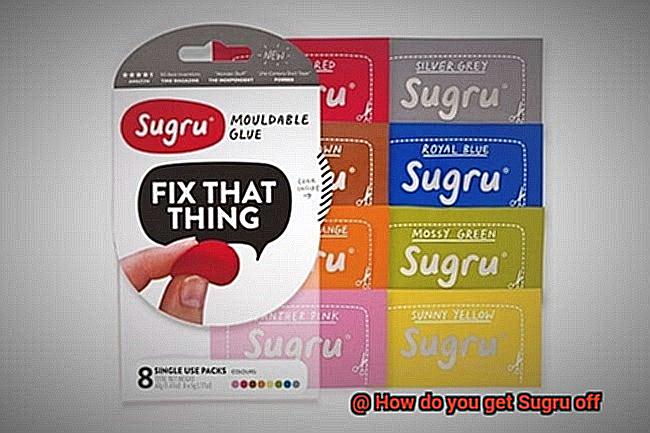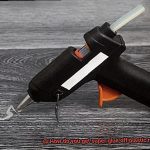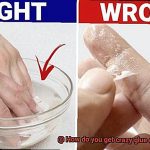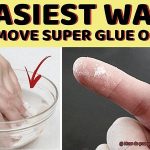Ever found yourself in a sticky situation with Sugru? You know, that amazing moldable glue that seems to stick to everything like a stubborn barnacle. Whether you’re a DIY enthusiast, an inventive problem-solver, or just someone who loves to tinker around, there may come a time when you need to remove Sugru from a surface.
Sugru is famous for its versatility and super-strong adhesion. It can fix, enhance, or customize almost anything under the sun. But what if you change your mind or want to restore something to its original state? How do you get rid of this wonder-glue without damaging the surface?
Well, fear not. In this blog post, we’ve got your back with five tried-and-true methods for safely removing Sugru. We’ll walk you through gentle techniques and more robust options suitable for different surfaces – glass, plastic, metal, wood, fabrics – we’ve got solutions for them all.
So join us on this journey as we unveil these secret weapons against sticky situations. Let’s dive in together and discover how to bid farewell to Sugru quickly and efficiently while keeping your surfaces intact. Say goodbye to unwanted stickiness and hello to freedom.
What is Sugru?
Contents
Sugru, the game-changing “moldable glue” or “self-setting rubber,” is here to save the day. Prepare to be amazed as we dive into the enchanting world of Sugru and discover its limitless potential.
Versatility at Its Best:
Sugru is a chameleon-like adhesive, effortlessly bonding with an array of materials including ceramics, glass, metal, wood, and most plastics. Whether you need to fix a cracked mug, join items together, create ergonomic grips, or mold custom shapes, Sugru is your go-to solution. It’s a superhero that can withstand water, heat, cold, UV radiation, and chemicals, making it ideal for both indoor and outdoor applications.
Easy to Use:
Imagine a soft and pliable material that resembles modeling clay – that’s Sugru straight out of the packet. Shape it to your heart’s desire before leaving it to cure and transform into a durable rubber-like substance within 24 hours. Even during the curing process, Sugru maintains its flexibility, allowing you to attain perfection in form.
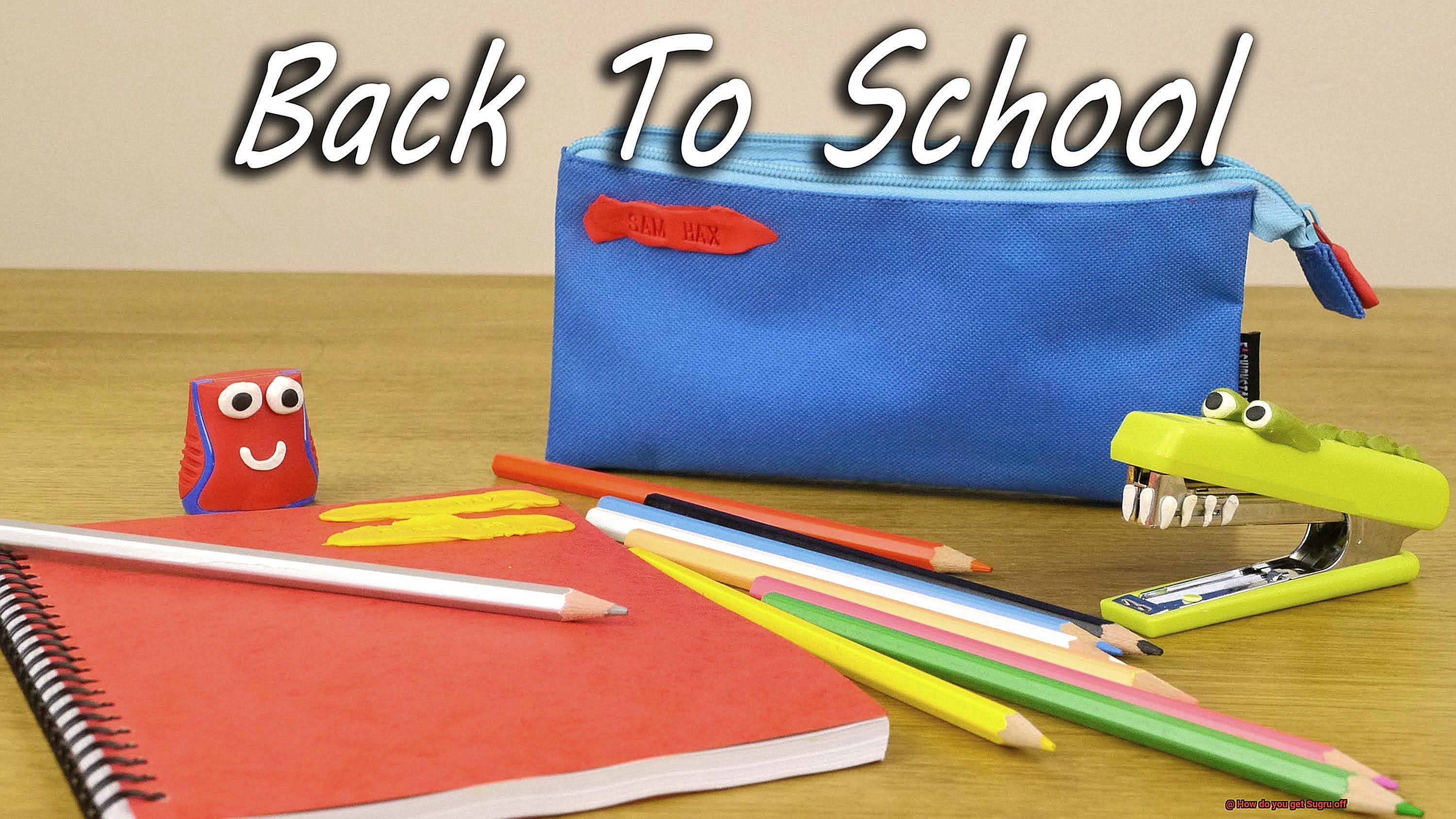
Colors Galore:
Say goodbye to mundane repairs. Sugru comes in an array of vibrant colors that add a touch of personality to your projects. Whether you prefer subtle blends or eye-catching bursts of brightness, customizing your repairs and creations is a breeze.
Sustainability Matters:
Sugru isn’t just an incredible adhesive; it’s also an eco-warrior. Crafted from non-toxic silicone rubber, it’s safe for both you and the environment. Moreover, its packaging is designed with minimal waste in mind, reducing its impact on our planet. With Sugru, you can make lasting repairs without compromising sustainability.
Types of Surfaces Sugru Bonds To
This amazing adhesive can bond to a wide variety of surfaces, from metals that shine and sparkle to delicate fabrics. But before you dive into your DIY project, it’s important to prepare each surface properly. In this comprehensive guide, we’ll explore the types of surfaces Sugru loves and the necessary steps you need to take for each one.
Metals that Shine and Sparkle:
Sugru is a superhero when it comes to bonding with metals like aluminum, steel, brass, and copper. Whether you’re repairing jewelry or tackling a metal sculpture, Sugru’s got your back. To ensure the best results, make sure the surface is clean and free from any dirt or oil.
A quick wipe with a cloth should do the trick. Sugru will adhere strongly to the metal’s smooth surface, providing a durable bond that can withstand daily wear and tear.
Plastic Fantastic:
Plastics are no match for Sugru’s mighty grip. Whether it’s ABS, PVC, acrylics, or polycarbonates, Sugru can repair broken toys or give cracked smartphone cases a new lease on life. Before applying Sugru, it’s crucial to clean the surface thoroughly.
Remove any dirt, dust, or grease that may hinder adhesion. This step ensures that Sugru forms a strong bond with the plastic, creating a seamless repair or enhancement that will stand the test of time.
Ceramics: Fragile No More.
Sugru has a soft spot for ceramics like porcelain and earthenware. If you have chipped mugs or broken plates, Sugru can come to the rescue. Before applying Sugru, make sure the surface is clean and free from any crumbs or tea stains. This ensures that Sugru adheres firmly to the ceramic, providing a reliable repair or reinforcement. With Sugru, your delicate ceramics can regain their strength and beauty, ready to be used and admired once again.
Glass: A Clear Winner.
Cracked glassware? No worries. Sugru loves bonding with glass surfaces too. Whether it’s a broken vase or a chipped glass, Sugru can restore their functionality and aesthetics. Just make sure the surface is squeaky clean before applying. Give it a quick wipe with a cloth, removing any fingerprints or smudges. Sugru will form a strong bond with the glass, creating a seamless repair that won’t compromise its transparency or strength.
Wood: Nature’s Best Friend:
Woodworking projects just got better with Sugru. This superhero adhesive can repair furniture joints, create custom grips for tools, or mold decorative elements onto wooden surfaces. The great thing about Sugru is that no extra preparation is needed for rough or porous wood surfaces. Just ensure they’re clean and ready for action. Sugru will bond securely to the wood’s natural texture, providing a reliable and durable result that blends seamlessly with the material.
Fabrics: Unbreakable Threads:
Sugru’s magic doesn’t stop at hard surfaces—it can even bond to fabrics. Got a hole in your favorite jeans or a tear in your backpack? Sugru can fix it. Before applying Sugru, ensure the fabric is clean and dry. Remove any dirt or residue that may hinder adhesion. Once applied, Sugru will bond securely to the fabric fibers, creating a flexible repair that can withstand regular use and even machine washing.
Using Heat to Remove Sugru
While Sugru is hailed for its strong adhesive properties, there may come a moment when you need to part ways with it. Whether you’ve made a mishap during application or simply desire to replace or repair something, mastering the art of removing Sugru is crucial.
One tried-and-true method for bidding adieu to Sugru is by harnessing the power of heat. Heat has the magical ability to soften the material, making it a breeze to peel off or gently scrape away. But before you start rummaging for your blowtorch, let’s dive into the safest and most effective ways to unleash the power of heat.
First and foremost, exercise caution and examine if the surface can withstand high temperatures without suffering any damage. For instance, plastic surfaces require extra vigilance to prevent melting or warping. Once you’ve determined that your surface is heat-friendly, prepare your trusty hairdryer and dial it up to its highest setting. Direct the fiery hot air towards the Sugru, moving the hairdryer in a circular motion to ensure an even distribution of heat.
As the Sugru begins to warm up, it will gradually soften and become more pliable. This newfound pliability allows for effortless peeling with your nimble fingers or gentle scraping with a plastic tool like a credit card or spatula. If you crave more concentrated and intense heat, consider wielding a heat gun. Just remember to maintain a safe distance between the scorching heat gun and your precious surface to avoid any unwanted scorch marks or damage.
Once you’ve successfully removed most of the Sugru using heat, you may still find stubborn remnants clinging on for dear life. Fear not. Introduce rubbing alcohol or acetone to the scene as your secret weapon against these lingering traces. Simply apply a small amount of the solvent to a cloth or cotton ball and proceed to gently rub away the remaining Sugru until it loosens its grip and surrenders.
Now that you’ve triumphantly bid farewell to all traces of Sugru, don’t forget to cleanse the surface with soap and water. This final step ensures the removal of any lingering residue or adhesive, leaving you with a pristine canvas for any future repairs or applications.
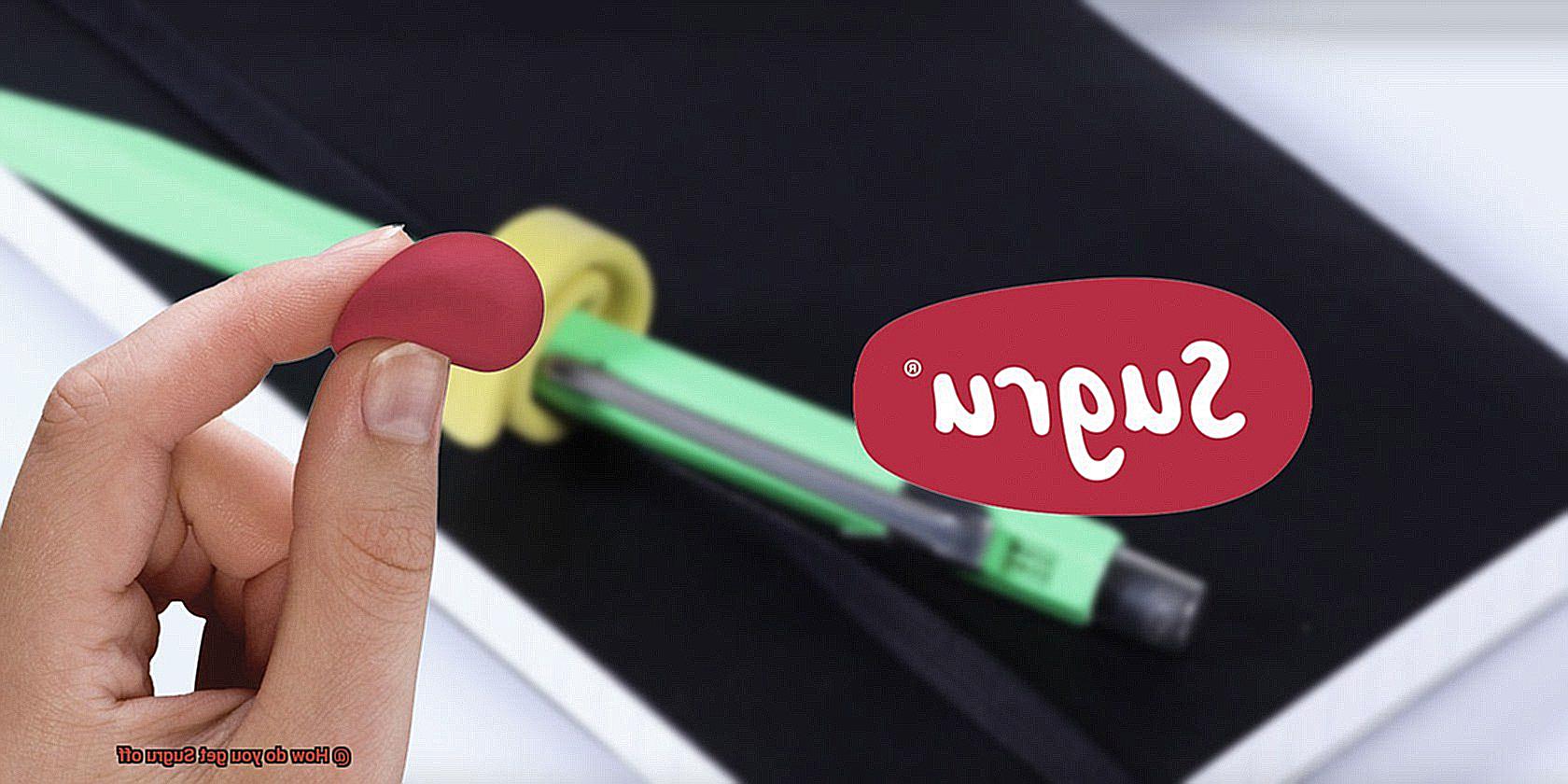
Using Solvents to Remove Sugru
You’ve successfully completed a Sugru project, but now you need to remove it. No worries, we’ve got your back. In this comprehensive guide, we will walk you through the process of using solvents to effectively remove Sugru from various surfaces.
Acetone is one of the most commonly used solvents for removing Sugru. This powerful substance breaks down the bond between Sugru and the surface it’s adhered to. But here’s the secret: for optimal results, pure acetone is the way to go. Don’t settle for diluted versions or nail polish removers that might not get the job done.
Before diving in, make sure you’re working in a well-ventilated area and protecting your skin with gloves. Safety always comes first.
To begin the removal process, apply a small amount of acetone onto a cloth or cotton ball. Gently rub this solvent-infused material on the affected area where the Sugru is stubbornly clinging. Give the acetone some time to work its magic – let it sit on the Sugru for a few minutes. This allows the adhesive to soften, making it easier to remove.
Now comes the satisfying part – bidding farewell to the softened Sugru. Equip yourself with a trusty plastic scraper or even just your own fingernail. Carefully lift off the softened Sugru, ensuring you don’t accidentally scratch or damage the surface underneath.
But what if there are remnants of Sugru still clinging on? Fear not. Simply repeat the process until every last bit of Sugru is vanquished from the surface.
After successfully removing Sugru with acetone, don’t forget to give that surface a thorough cleaning. Use soap and water to banish any residue left behind by the solvent.
Now, here’s an insider tip: acetone isn’t the only solvent that can do wonders in removing Sugru. Rubbing alcohol and mineral spirits can also be used in a similar fashion. Just like with acetone, remember to test these solvents on a small, inconspicuous area first to ensure they won’t cause any damage or discoloration.
So there you have it – armed with the right solvents and a dash of patience, you can easily bid adieu to Sugru from various surfaces. Now go forth and embark on your Sugru adventures, always keeping some solvents on hand, just in case.
In summary:
- Acetone is a commonly used solvent for removing Sugru.
- Use pure acetone for the best results.
- Work in a well-ventilated area and wear gloves for safety.
- Apply acetone onto a cloth or cotton ball and gently rub the affected area.
- Let the acetone sit on the Sugru for a few minutes to soften it.
- Use a plastic scraper or fingernail to lift off the softened Sugru.
- Repeat the process if necessary.
- Clean the surface thoroughly with soap and water after removing Sugru.
- Rubbing alcohol and mineral spirits are alternative solvents that can be used.
- Always test solvents on a small area first to avoid damage or discoloration.
Mechanical Methods for Removing Sugru
In this article, we’ll explore the fascinating world of mechanical methods for removing Sugru from different surfaces. From delicate scraping to sizzling heat, we’ve got all the tricks up our sleeves.
Scrape with Caution:
A sharp object like a knife or razor blade can be your trusty companion in gently scraping away cured Sugru. Remember, slow and steady wins the race as you navigate through the removal process, ensuring that the underlying surface stays unharmed.
Scrub Away:
For those textured surfaces or fabrics, grab a scrubbing brush or an abrasive pad. With gentle strokes, scrub away the Sugru, revealing a clean canvas beneath. This method is particularly effective for those hard-to-reach spots that demand extra attention.
Combine Forces:
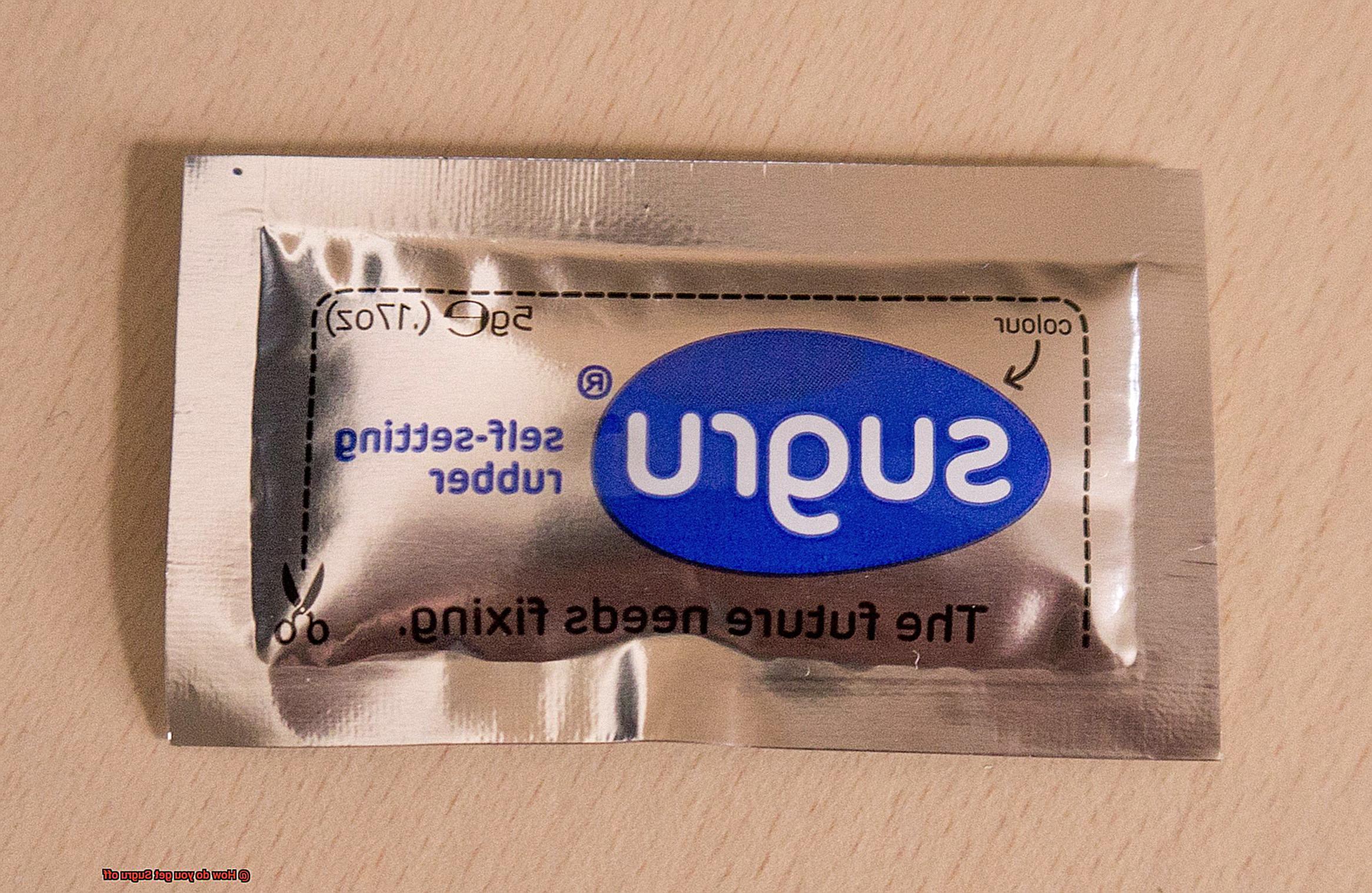
Sometimes, larger areas of Sugru require a tag-team effort. A combination of scraping and scrubbing techniques can ensure every trace is eradicated without causing any harm. It’s all about finding the perfect balance.
Heat It Up:
In the face of stubborn Sugru, heat becomes your faithful ally. Unleash the power of a hairdryer or heat gun to warm up the cured Sugru, rendering it more pliable. Once heated, watch as it effortlessly peels or scrapes off, leaving no trace behind.
Test Before Tackling:
Before diving headfirst into any removal method, it’s vital to conduct a small-scale test on an inconspicuous area. Delicate surfaces may react differently to mechanical methods, so proceed with caution and adapt your approach accordingly.
Know Your Limits:
While mechanical methods are generally effective, not all surfaces or materials can handle them. When in doubt, seek advice from professionals or consider alternative removal options, such as chemical solvents.
Freezing the Bonded Area to Remove Sugru
Sugru, the versatile adhesive that rescues us from countless DIY disasters and brings our broken belongings back to life. But what happens when you need to remove it? Fear not. We’ve got a cool solution for you – freezing. In this post, we’ll explore the process of using freezing temperatures to remove Sugru from bonded surfaces. So grab your lab coat and let’s dive in.
Step 1: Prepare for Frosty Magic
To begin, gather your materials: a freezer or a can of compressed air. If using a freezer, seal the object with the bonded Sugru in a bag or container to prevent moisture interference.
Step 2: Let It Chill
Place the sealed object in the freezer and let it rest for a few hours. As time passes, the Sugru will freeze, becoming more brittle and easier to tackle.
Step 3: The Great Unveiling
Once the Sugru is fully frozen, retrieve your icy treasure and prepare for the grand reveal. Gently attempt to pry off the hardened Sugru using a plastic scraper or even your trusty fingernail. The extreme cold has made it more susceptible to breaking off.
Alternative Method: Freeze Spray Power
If a freezer is not available, fear not. Grab a can of compressed air, turn it upside down, and direct the frigid blast onto the bonded area. The rapid cooling effect will transform the Sugru into a brittle state. From here, you can scrape it off using a plastic scraper or your fingernail.
Considerations and Final Thoughts:
While freezing is an effective method in most cases, deeply penetrated or long-standing Sugru may require additional techniques. Moreover, freezing may not completely eliminate all traces of Sugru from porous surfaces. In such scenarios, alternative methods may be necessary.
Remember, freezing provides a safe and convenient way to bid farewell to Sugru without causing damage to your beloved belongings. So the next time you find yourself in a sticky situation with Sugru, unleash the power of cold and watch that stubborn adhesive shatter away.
Disclaimer: Always test any removal method on a small, inconspicuous area first to avoid potential damage.
By freezing the bonded area, Sugru becomes more brittle and easier to remove. This method can be implemented using a freezer or a can of compressed air. Freezing the Sugru causes it to harden, making it more susceptible to breaking off or scraping away. However, freezing may not completely remove all traces of Sugru, especially if it has deeply penetrated porous surfaces or if it has been left on for an extended period. In such cases, additional methods may be necessary.
Freezing is a safe and convenient way to remove Sugru from various surfaces such as metal, glass, plastic, and ceramics. It does not cause any damage to the underlying material and can be easily performed at home.
Factors That Affect the Ease of Removing Sugru
In this article, we will explore the factors that can affect the ease of removing Sugru and share some expert tips for a hassle-free removal process.
Factor 1: Surface Material
The type of material that Sugru is applied to plays a significant role in removal. Sugru adheres well to plastic, metal, glass, and ceramics. However, porous materials like fabric or wood may pose more of a challenge.
These materials make Sugru adhere more strongly, making it harder to remove without leaving residue or causing damage. Exercise caution when removing Sugru from these surfaces and consider using gentle techniques.
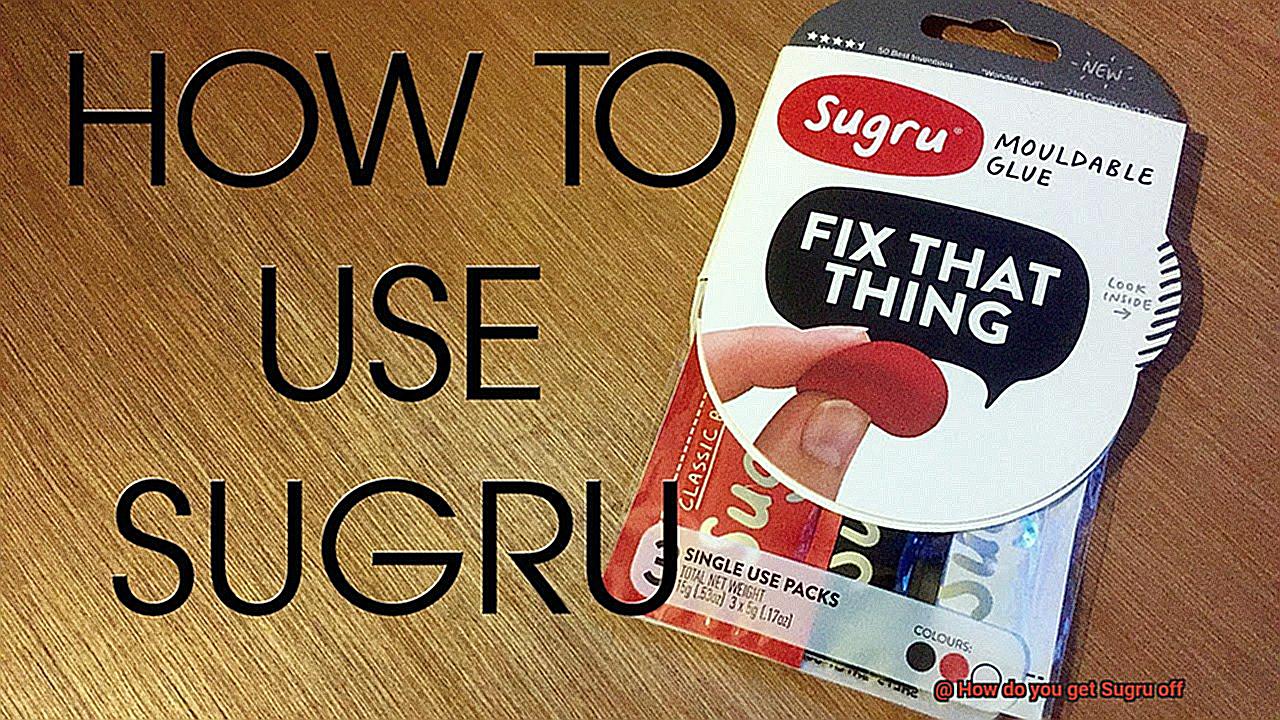
Factor 2: Adhesion Time
Patience is key when it comes to removing Sugru. The longer Sugru has had to cure, the stronger its adhesion becomes. Waiting for the suggested curing time of 24 hours ensures that Sugru reaches its full strength. Attempting removal before this time may result in difficulty and potential residue left behind.
Factor 3: Temperature
Temperature can be your ally when it comes to removing Sugru. Higher temperatures make Sugru softer and more pliable, facilitating easier removal. On the other hand, colder temperatures make Sugru harder and more resistant to removal. If you find stubborn Sugru, try gently warming the area with a hairdryer to soften it up before attempting removal.
Factor 4: Removal Technique
Mastering the art of removal technique can make all the difference. Start by gently peeling off any excess or loose Sugru with your fingers or a plastic scraper. Avoid sharp objects or excessive force that could damage the surface. If Sugru is still firmly attached, try using a heat source like a hairdryer to soften it before peeling it off in small sections. Patience and a gentle touch are key.
Factor 5: Age of Sugru
Like fine wine, Sugru ages with time. Freshly applied Sugru is more pliable and easier to remove compared to older Sugru that has cured for a longer period. If you’re dealing with older Sugru, be prepared to exercise more patience and care during the removal process.
Tips for Safely Removing Sugru
Sugru is a remarkable adhesive that can help you fix, customize, and create all sorts of things. But what happens when you need to remove it? Don’t worry. In this blog post, we’ll share some tips and tricks to safely remove Sugru from various surfaces without causing any damage. Whether you made a mistake or simply want to change things up, these techniques will have your surfaces looking clean and tidy again in no time.
Soft and Pliable: The Finger Peel Method
If the Sugru hasn’t fully cured, it will still be somewhat soft and pliable. In this case, you can use your fingers to gently peel it away from the surface. Start at one end and apply gentle pressure as you go. Take your time and avoid pulling too hard or too quickly to prevent any damage.
Sharp and Precise: Knife or Scraper
For fully cured Sugru that won’t budge with your fingers alone, a sharp tool like a knife or scraper can come in handy. Carefully lift and pry away the edges of the Sugru using the blade. Once you’ve lifted an edge, continue scraping away the rest of the Sugru. Remember to be cautious and avoid using sharp tools that could scratch or damage the surface.
Heat It Up: Hairdryer or Heat Gun
Heat is another effective way to remove Sugru. Use a hairdryer or heat gun on a low setting and hold it a few inches away from the Sugru. Move it back and forth in a sweeping motion to warm up the adhesive. As the Sugru softens, it becomes easier to peel away.
Soak Away: Hot Water Bath
When dealing with larger areas of Sugru or hard-to-reach places, soaking it in hot water can do the trick. Fill a basin or sink with hot water and submerge the affected area for 15-20 minutes. The heat will penetrate the Sugru, making it softer and easier to remove. After soaking, use your fingers or a tool to gently peel away the softened Sugru.
Solvent Solutions: Rubbing Alcohol or Acetone
In some cases, using a solvent may be necessary. Rubbing alcohol or acetone can effectively break down and dissolve Sugru. Apply a small amount onto a cloth or cotton ball and gently rub it onto the Sugru. Let it sit for a few minutes before attempting to remove the Sugru with your fingers or a tool. Always work in a well-ventilated area and follow safety precautions.
G-NVfe58htU” >

